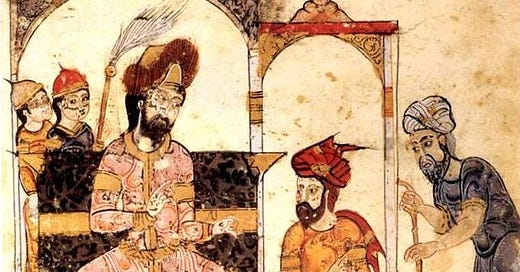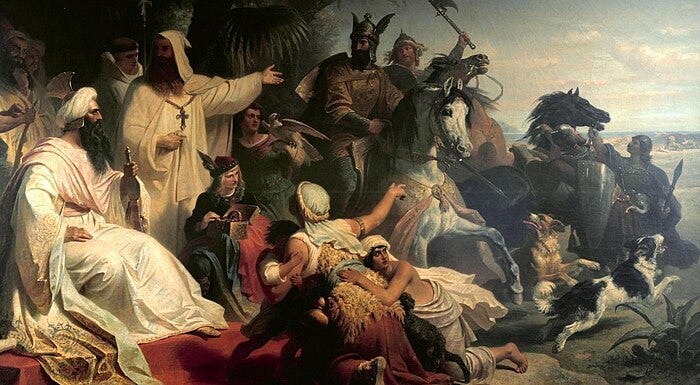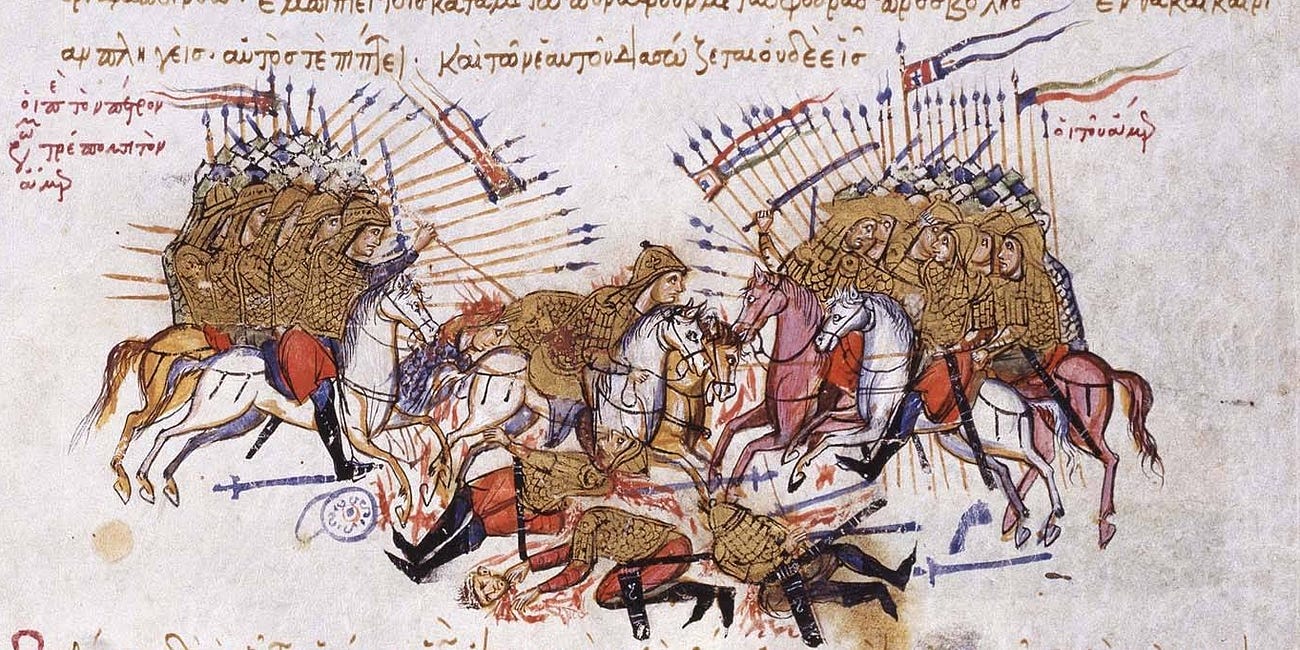Splendid stories, but too many gaps in historical analysis
Review of When Baghdad Ruled the Muslim World: The Rise and Fall of Islam's Greatest Dynasty by Hugh N. Kennedy
In the 750 revolution, the Abbasids took power from the Ummayads, who were a group from the prophet Mohammed's tribe. The Abbasids argued that they were cousins of the Prophet, arguably close relatives, hence more legitimate to lead the Islamic faithful.
Once power was consolidated, there were some very interesting personalities, such as the shrewd and ruthless al-Mansur (المنصور), the second Abbasid Caliph, who established the state's ruling structure with Persian viziers and a professional army. He was an austere figure, had no qualms about murdering his rivals, and founded Bagdad, inaugurating a great cultural flowering. Then there is Harun al-Rashid (يد هَارُون ٱلرَشِي), the ruler in 1000 Arabian Nights, who exemplifies the golden age, though sowed the seeds of civil war that was to lead to the dynasty's downfall 100 years later. They created the Harem and countless other forms that set the standard for all later Islamic regimes, which never equaled their splendor or cultural sophistication and openness. There was even a period of inquiry into the Koran as an historical document, as Greek philosophical influence grew for a brief period.
Unfortunately, the reader will find the fun stories, but little hard fact about how the empire was run, why it reached a certain size, why it suddenly became religiously conservative and choked off the development of practical scientific enquiry, and what the foundations of power were. In other words, I wanted more geo-political and social analyses.
The fall of the Abbasids in 861 CE came with their inability to provide orderly successions as well as their dependence on Turkic mercenaries (the Mamluks). As chaos increased, the provinces rebelled and even the maintenance of the waterways that had made Mesopotamia a breadbasket to unique civilizations for 3000 years were allowed to fall into ruin, never again to be revived. Not only was this the passing of Arabs as a global power, but the end of a united Islam, as the Sunni-Shiite split hardened into separate sects and innumerable regional principates arose, such as Umayyad Spain. Alas, these details are neglected in favor of personal tales of decapitations, torture, and corruption and betrayal – fun stories, but just a surface gloss.
This book is a fun read that is well written and designed for the interested layman. It never gets bogged down in academic controversies and finds the fun in the blood, sex, and civilization of a truly unique empire. Unfortunately, there were many historical details, however academic this might sound, that I was hungry to learn about and felt continually disappointed at their light treatment, i.e. how Islam was instituted in the occupied countries (or why it succeeded in taking such firm root), what the sources of Arab power were (faith, organization, economics or some combination thereof?), and why the Abbasids produced some of the greatest cultural works that humanity has ever known. While Kennedy makes it clear that he intended to tell interesting stories, I really wanted much more than he provided. As such, it is good popular history, but not dense enough for my taste. The Sunnis and Shiite conflict appeared more tribal than theological. Then, the Persians were included as vital allies, though their conversion to Islam and their own culture are barely covered in the book. This was thus a badly incomplete picture. It is not even clear why the revolution took hold, beyond bare facts like the Ummayads were unpopular due to their Syrian base.
This book is a good starting point, but less than half the history.
Related reviews:
Emergence of Arab Islam and the end of Antiquity – in context
This book covers a seminal historical nexus, marking the death of classical civilization and the beginning of the medieval period. At the center of it is the rise of Islam, which would become the dominant cultural and military force for the next 800 years.
Clashing civilizations in parallel
This delightful book evokes and partially analyses the explosive expansion of Arabic (then Arabo-Berber) Islam in the wake of the collapse of the Roman and Sassanid Empires to its eventual decline as a new Europe emerges. It portrays a dynamic civilization at its apogee, beginning in Syria and continuing in Spain; developments in a backward and stagnant…
Splendidly incisive essay on the eclipse of classical culture
This is one of those history books that defines the era, setting a standard that is either accepted or opposed by all who follow. Because the end of the classical culture is one of the turning points that most fascinates me, this book was a particular pleasure, at once an over-arching synthesis yet accurate in its evocation of detail.








I found “The House of Wisdom” to be a valuable “pop” resource for understanding the Islamic renaissance centered in Baghdad.